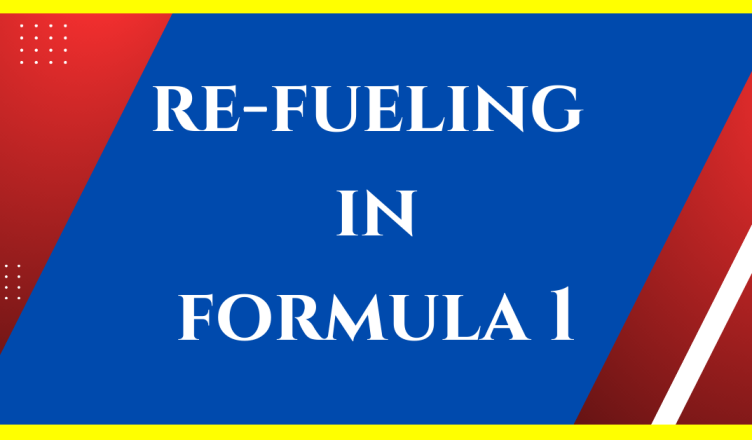Formula One (F1) racing is a sport that requires drivers to compete in high-performance race cars that are designed to reach incredible speeds on the track.
F1 cars are unique in many ways, and one of the most significant differences between them and regular cars is their fuel capacity and fueling strategies.
In this article, we’ll explore the topic of F1 car re-fueling, discussing its history, mechanics, and strategy.
The Fuel Capacity of F1 Cars
F1 cars are incredibly efficient machines designed to get the most power out of the least amount of fuel.
Unlike regular cars, which have a fuel tank that holds enough fuel for several hundred miles of driving, F1 cars are only allowed to carry a maximum of 110 kg of fuel per race.
This fuel is stored in a tank located at the back of the car, near the engine.
The fuel tank capacity of F1 cars is directly related to race strategy.
Teams must balance the need to have enough fuel to finish the race with the need to have a light enough car to achieve maximum speed.
Fuel efficiency is also a critical factor in F1 racing, and teams work hard to maximize the efficiency of their engines to get the most power out of the least amount of fuel.
Re-Fueling in F1
The history of re-fueling in F1 racing is a long and complicated one. In the early days of F1 racing, cars were allowed to refuel during a race.
However, this practice was eventually banned due to safety concerns and the high cost of equipment.
In 1994, re-fueling was reintroduced as a way to add excitement to the sport and to give teams more options for race strategy.
However, in 2010, the practice was again banned due to safety concerns.
When re-fueling was allowed, it was often used to manipulate race strategy, with teams filling their cars with less fuel to gain a weight advantage and make their cars faster on the track.
The Modern F1 Fueling Process
Today, F1 cars are not allowed to re-fuel during a race, and all cars must start the race with enough fuel to finish.
This means that fuel strategy is a critical part of any race.
The process of fueling an F1 car during a race involves pit stops, during which the driver stops at a designated area in the pit lane and the pit crew refuels the car.
During a pit stop, the pit crew must work quickly and efficiently to ensure that the car is fueled up as quickly as possible.
The process typically takes just a few seconds, with the pit crew using specialized equipment to pump fuel into the car’s fuel tank.
The pit crew also performs other tasks during a pit stop, including changing tires and making minor repairs to the car.
Safety is a critical consideration in the fueling process.
The fuel is highly flammable, and any mistake during the re-fueling process could result in a dangerous fire.
To minimize the risk of fire, the pit crew must wear protective clothing and use specialized equipment to prevent fuel spills.
How Fuel Strategy Affects F1 Races
Fuel strategy is a critical part of F1 racing, and it can make or break a race.
Teams must balance the need to have enough fuel to finish the race with the need to have a light enough car to achieve maximum speed.
The fuel strategy that teams use depends on a variety of factors, including track conditions, weather, and the strengths and weaknesses of their cars.
Examples of F1 races where fuel strategy played a crucial role include the 2005 San Marino Grand Prix, where Renault driver Fernando Alonso won the race due to his team’s superior fuel strategy.
In this race, Alonso had less fuel in his car than his competitors, which allowed him to maintain a faster pace and ultimately win the race.
Another example is the 2021 Hungarian Grand Prix, where Lewis Hamilton won the race despite starting from the pit lane due to a mistake by his team in qualifying.
In this race, Hamilton’s team opted for a different fuel strategy, starting the race with a full tank of fuel and making only one pit stop.
This strategy allowed Hamilton to move up the field quickly and ultimately win the race.
Conclusion
In conclusion, F1 car re-fueling is a critical aspect of the sport that requires careful consideration and strategy.
While the practice of re-fueling during a race has been banned for safety reasons, fuel strategy remains an essential part of any F1 race.
Teams must balance the need to have enough fuel to finish the race with the need to have a light enough car to achieve maximum speed.
Fuel efficiency is also a critical factor, with teams working hard to maximize the efficiency of their engines to get the most power out of the least amount of fuel.
As the sport continues to evolve, it’s possible that we may see changes to F1 fuel regulations in the future.
However, one thing is for certain: fuel strategy will continue to be a crucial factor in the outcome of any F1 race.
By understanding the mechanics and strategy involved in F1 car refueling, fans can gain a deeper appreciation for the sport and the incredible machines that make it possible.
